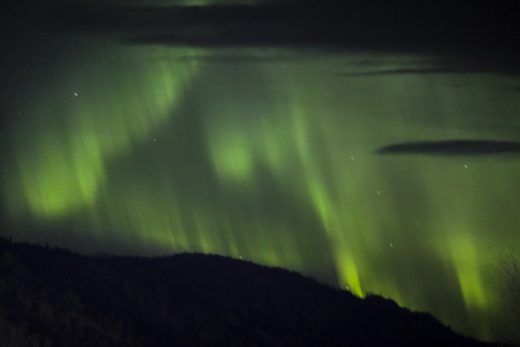Bucks County residents could soon have the opportunity to witness the mesmerizing phenomenon of the Northern Lights, also known as aurora borealis.
According to a forecast from the Geophysical Institute at the University of Alaska at Fairbanks, the natural spectacle will be visible in Pennsylvania between Wednesday at 10 p.m. and Thursday at 2 a.m.
While the Northern Lights are typically observed in Alaska, Canada, and the Arctic region, experts suggest that the lights may be visible in more locations due to a solar storm resulting from the impact of solar wind on the Earth’s atmosphere this week.
This occurrence is part of the 11-year solar cycle, expected to reach its peak in 2024, according to reporting by the Associated Press.
“On Wednesday and Thursday, the Kp-index, or planetary index, will be at five and six, respectively. The scale goes all the way up to nine, and any occurrence above five is considered a geomagnetic storm,” NPR reported.
The optimal viewing times for this week’s storms may vary depending on factors such as moonlight and weather conditions. The brightness of the moon can diminish the visibility of the Northern Lights, and cloud cover may obstruct the spectacle entirely. The middle of the night is often considered the best time to observe the aurora borealis, as it is less visible closer to sunset and sunrise.
For those seeking to experience the Northern Lights, the National Oceanic and Atmospheric Administration’s (NOAA) Space Weather Prediction Center advises finding a dark viewing spot away from city lights. Looking towards the northern horizon is recommended to maximize the chances of witnessing this ethereal display.
To determine the peak times for viewing in your area, you can refer to an animated forecast provided by NOAA on Wednesday morning.
Auroras, including the Northern Lights and their Southern Hemisphere counterpart, the Southern Lights or aurora australis, are caused by coronal mass ejections (CME) from the sun. The ejections result in solar winds colliding with the upper atmosphere of the Earth.
The Northern Lights occur when gas emissions from the sun collide with the Earth’s magnetic fields, creating currents of charged particles, which produce colorful “curtains” of light when exposed to oxygen and nitrogen high in the Earth’s upper atmosphere.
The collisions can appear as various colors such as pink, purple, red, and green.









